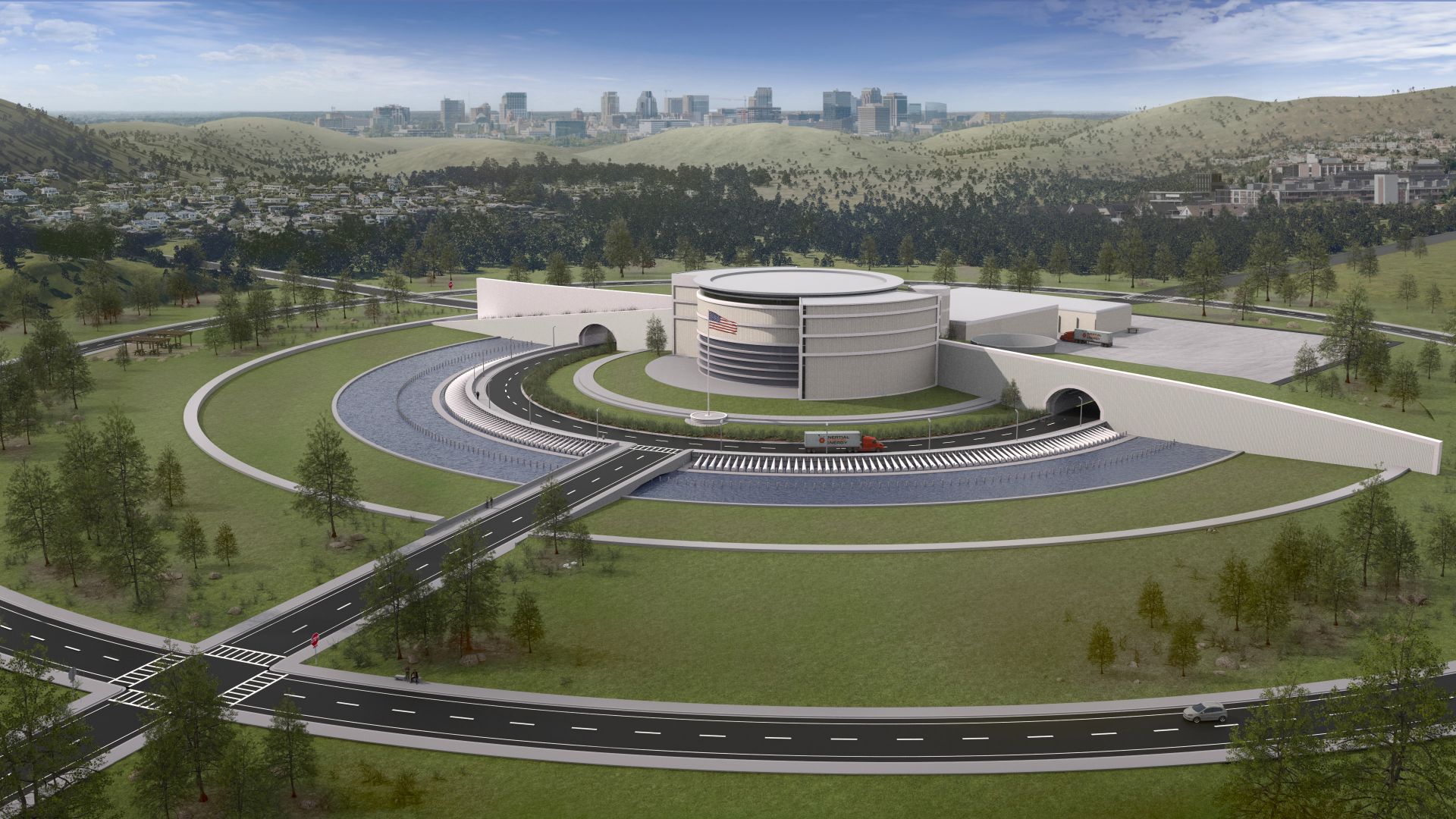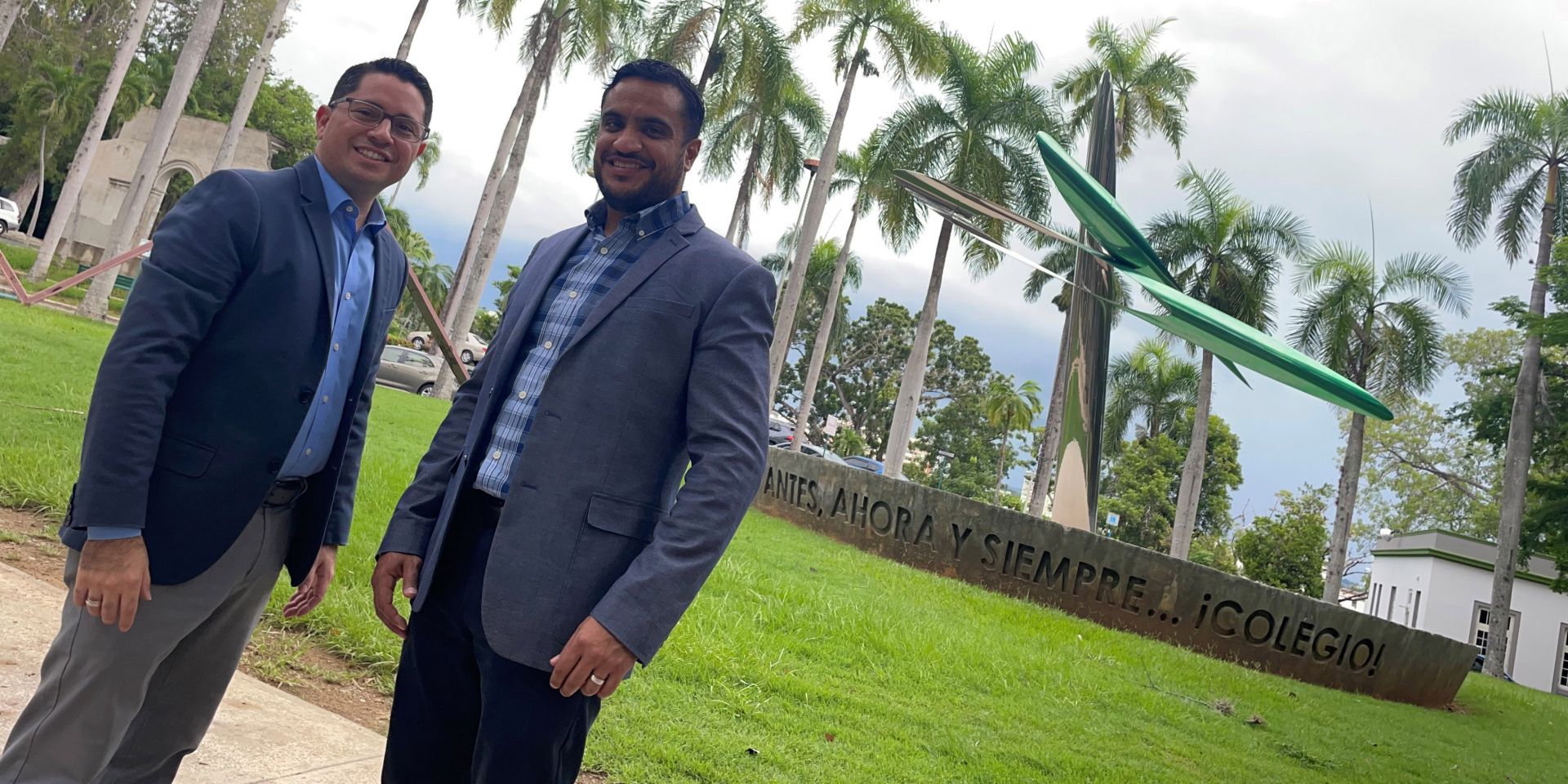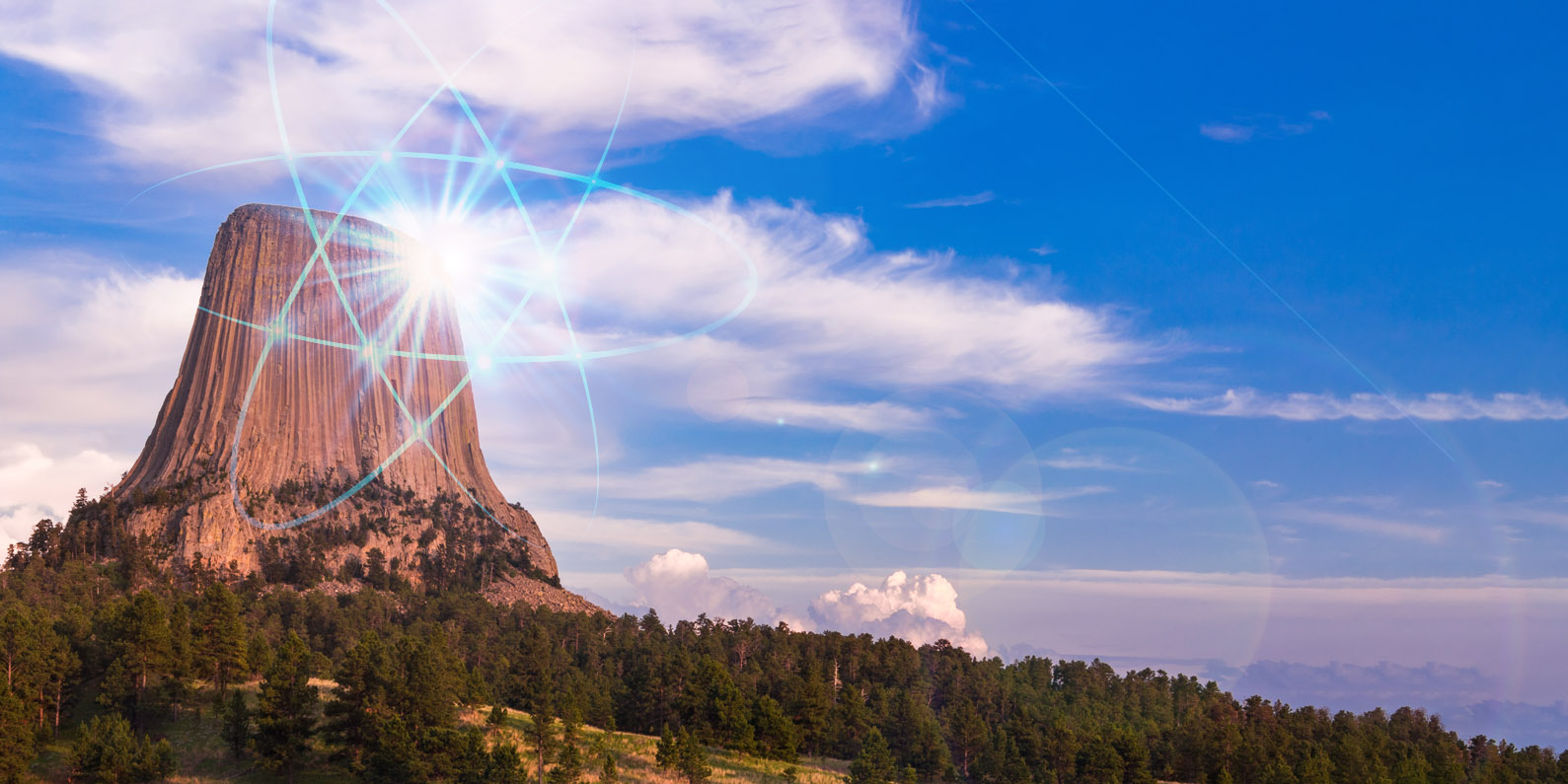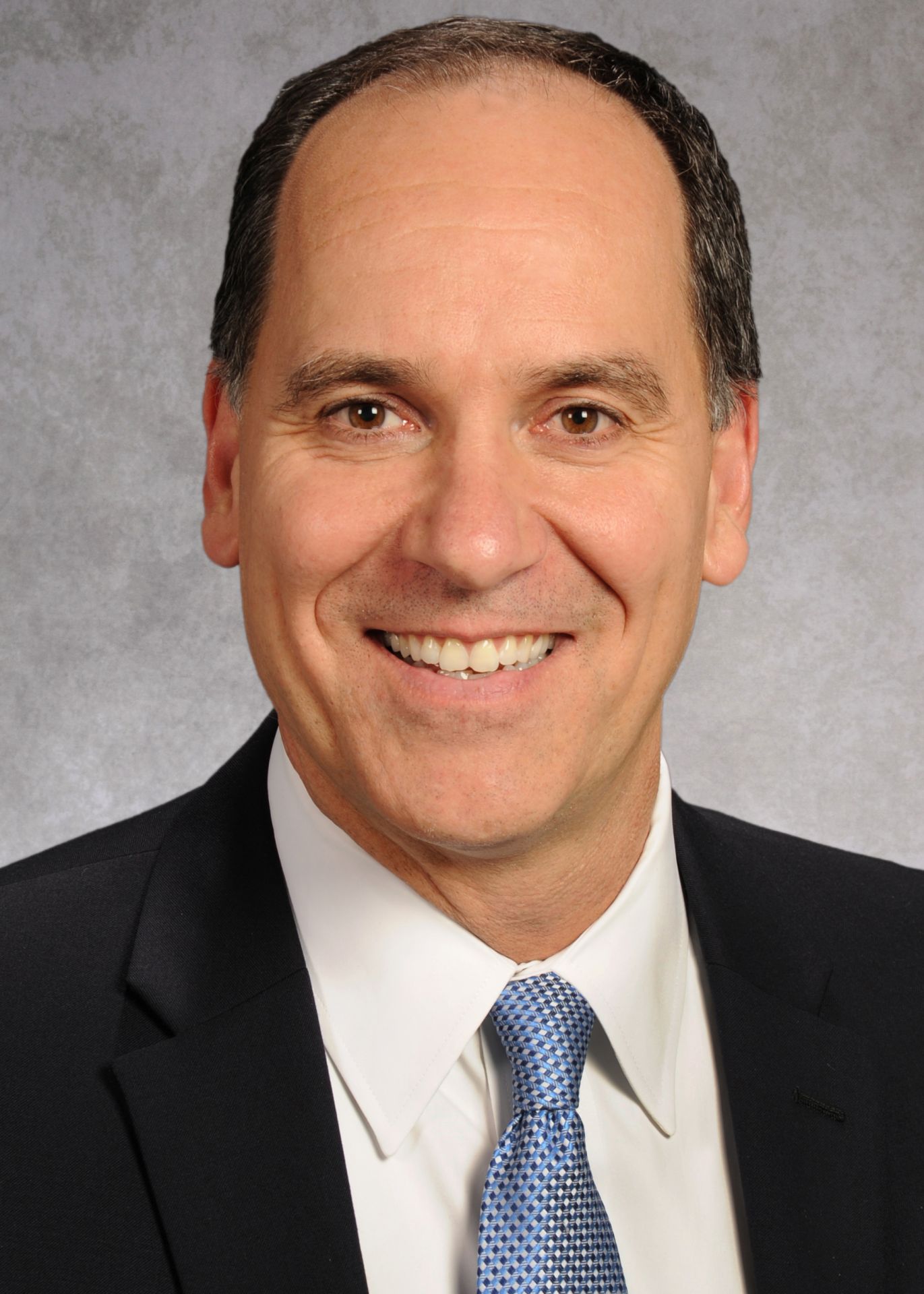July 19, 2024, 3:06PMNuclear NewsBenny Evangelista and Charlie Osolin Concept art showing an IFE power plant of the future. (Image: Eric Smith/LLNL)
It was a laser shot for the ages. By achieving fusion ignition on December 5, 2022, Lawrence Livermore National Laboratory proved that recreating the “fire” that fuels the sun and the stars inside a laboratory on Earth was indeed scientifically possible.
The Godiva I device, an unreflected 54-kg sphere of 93.7 percent pure uranium-235, before (left [in the scrammed state]), and after (right) the February 3, 1954, criticality excursion that released 5.6 × 1016 neutrons and warped or broke several support structures of the device. (Photos: DOE)
Fast burst reactors were the first fast-spectrum research reactors to reach criticality by using only prompt neutrons with high-enriched uranium as fuel, creating a pulse for microseconds. Among many achievements, fast burst reactors were the first research reactors to demonstrate the ability of thermal expansion to terminate a pulse and to show how this could aid in reactor safety. In addition, fast burst reactors were pivotal in early fission studies including critical mass determination, criticality safety, the study of prompt and delayed neutrons, and much more.
Marcos Rolón-Acevedo (left) and Robert Roche-Rivera pose at UPRM at the beginning of their adjunct professorships in August 2023. (Photo: NRC/UPRM)
Robert Roche-Rivera and Marcos Rolón-Acevedo are licensed professional engineers who work at the U.S. Nuclear Regulatory Commission. They are also alumni of the University of Puerto Rico–Mayagüez (UPRM) and have been sharing their knowledge and experience with students at their alma mater since last year, serving as adjunct professors in the university’s Department of Mechanical Engineering. During the 2023–2024 school year, they each taught two courses: Fundamentals of Nuclear Science and Engineering, and Nuclear Power Plant Engineering.
Several-inch-diameter manganese nodules just sit on the ocean floor and can be collected with little to no actual mining, as opposed to severe mining on land. (Photo: Wikimedia Commons)
Regardless of how you power our grid or how you attempt to decarbonize our economy, we will need many various metals to achieve any future, or even to just continue with business as usual. Critical metals like cobalt, lithium, nickel, and neodymium are essential to a low-carbon-energy future if renewables and electric vehicles are to play a large role.1 Even if nuclear provides 100 percent of our power, just operating the grid and electrifying most sectors will take huge amounts of critical metals like copper, notwithstanding the fact that nuclear power requires the least amount of metals and other materials of any energy source.
A cut-away view of Westinghouse’s AP300 reactor. (Image: Westinghouse)
Power generation from nuclear fission as a clean and stable source of electricity has secured the interest of policymakers and industry leaders around the globe. Last fall, the United States spearheaded a pledge at COP28 to get countries to agree to triple nuclear capacity worldwide, and recently the members of the Group of 7 (G7) nations that currently use nuclear power have reaffirmed their pledges to invest in that power source to cut carbon emissions.
As of this writing, U.S. policymakers are trying to make good on that promise by passing legislation to support nuclear power, funding the domestic fuel supply chain, and working to pass the ADVANCE Act. On top of the support from Washington, D.C., power-hungry industries like data centers and chemical engineering are looking to secure stable, carbon-free power directly from power plants.
The NRC's Greg Bowman (left) and George Smith. (Photos: NRC)
Greg Bowman and George Smith work for the Nuclear Regulatory Commission in implementing programs that deal with risk, whether to nuclear power plants or from nuclear materials, such as radiological sabotage and theft or diversion of materials. Bowman is the director of the NRC’s Division of Physical and Cybersecurity Policy in the Office of Nuclear Security and Incident Response. Smith is the senior project manager for security in the Source Management & Protection Branch of the Division of Materials Safety, Security, State, and Tribal Programs in the Office of Nuclear Material Safety and Safeguards.
The three initiatives Bowman and Smith discussed with Nuclear News editor-in-chief Rick Michal are the Insider Threat Program, the Cybersecurity Program, and the Domestic Safeguards Program.
The Argonne-West laboratory site before it was merged with the Idaho National Engineering and Environmental Laboratory into today’s Idaho National Laboratory. The silver dome in the photo is Experimental Breeder Reactor-II, the silver structure with the flat top and sloping sides is the Zero Power Plutonium Reactor, and the brown boxlike structure behind ZPPR is the Hot Fuel Examination Facility. (Photo: Argonne National Laboratory)
Idaho’s nuclear energy history is deep and rich. The National Reactor Testing Station (NRTS) began its history as an artillery testing range in the 1940s.1 Following World War II, Walter Zinn, Argonne National Laboratory’s founding director and Manhattan Project Chicago Pile-1 project manager, proposed to the Atomic Energy Commission that a remote location be found for building test reactors. In 1949, he and Roger S. Warner, AEC’s director of engineering,2 developed a list of potential sites from which the NRTS was selected. Over the decades, quite a few companies and AEC national laboratories built 52 experimental and test reactors at the NRTS, including 14 by Argonne.3 (For a brief AEC video on the NRTS, see youtube.com/watch?v=C458NsH08TI.)


















